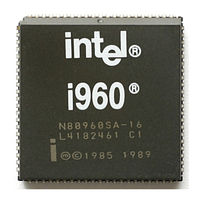Intel i960 Series Manuals
Manuals and User Guides for Intel i960 Series. We have 3 Intel i960 Series manuals available for free PDF download: User Manual, Design Manual
Advertisement
Intel i960 Series Design Manual (102 pages)
RM/RN I/O Processor
Brand: Intel
|
Category: Computer Hardware
|
Size: 1 MB
Table of Contents
Intel i960 Series User Manual (102 pages)
for Cyclone and PCI-SDK Evaluation Platforms
Brand: Intel
|
Category: Computer Hardware
|
Size: 0 MB
Table of Contents
Advertisement
Advertisement


